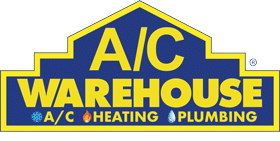Air Conditioning Maintenance Video

Air Conditioning Maintenance Video
The summer months are in full swing, and viewing this air conditioning maintenance video should be at the top of the list. It’s easy to think the air conditioner and heater run on their own. For the most part, they do – but knowing how to keep your system in order can help save time and money. What exactly is air conditioning maintenance, and how does it work?
Everyone should have a routine air conditioning maintenance schedule. This should help alleviate problems before they occur. Understanding the important parts of the system and how they work together makes a difference in the upkeep and longevity of the unit. There are two main parts of a typical central air conditioning unit:
Inside – pulls hot air from the home and recirculates through a blower motor into cold air.
Outside – handles the refrigerant.
Whats in this Air Conditioning Maintenance Video?
The video discusses important information you need to know to prevent untimely breakdowns.
Inside the home

Blower motor
The blower motor pulls air from inside the space across cold coils to provide cold air. It needs proper air flow.
Evaporator coils
The evaporator coils are very important to the integrity of your unit. The coils must be cleaned from time to time to keep the system healthy. Brushing the coils with a coil brush, or using a no-rinse coil cleaner can keep the system in good working order. There may be excessive buildup, which requires additional cleaning.
Electrical connections and heating elements
The system works the same in heating the space as it does for cooling. When turning on the heating elements, you may smell something burning. This is normal, as dust buildup occurs.
The system condenses water, which should be visible from the outside. It is important to note that although water may be dripping from the system, there could still be issues that have not been detected. Proper maintenance is the only way to determine whether or not the system is working correctly. If there is any growth on the wires, it can be wiped off but should be immediately addressed. This buildup can also impede air flow and cause issues with the efficiency of the system.
Inspections
It takes time to inspect cooling/heating units to ensure everything is working and in order. Filters should be replaced on a monthly basis, with pleated filters being most recommended to increase air quality in the home. One of the most common issues with the condenser and evaporator is a clogged drain. In order to alleviate this, maintenance should be done twice a year, with a quarter cup of vinegar poured into the drain once a month or every other month to help the system remain in good condition, and the drain pain open.
Timing
Routine air conditioning maintenance varies depending on the type of unit, where the unit is located, and the condition of the unit. Typical times for a thorough inspection is generally 45 minutes, but there are always situations where longer times may occur due to previous maintenance, and whether or not issues have been detected.
Outside the home

The condensing unit outside is just as important as the parts inside. One of the main components is the capacitor, which helps the fan and compressor spin at the right speed to keep the unit working properly. When doing a check on the system, the capacitor is usually one of the most frequent problems that occurs. If the test on this element is questionable, it should be changed.
There are a few parts that help the system:
Contactor
The contactor carries volts into the unit. It is controlled by the thermostat, and is an integral part of the system. This may need to be changed on a frequent basis.
Other Details
In order to detect problems or accurately assess the unit, gauges must be attached to determine whether or not the system is getting what it needs inside and outside. These gauges provide information on the pressure of the air handler inside, and the condenser outside. These indicate the coolant level, and helps track the condition of the coils on the outside unit.
There may be debris in the condenser coils, which promotes clogging. To clean the condenser, a cleaner is sprayed into the evaporator coil, and then rinsed off with a hose. This should be done every six months to keep the system operational. The outside of the coils should also be cleaned and hosed, and the system reassembled. A full system cleaning indoor and outdoor should take about a full hour, but may take additional time depending on the work needing to be done.
These tips should help keep the air conditioning unit working properly. For more information, contact a team member today!







